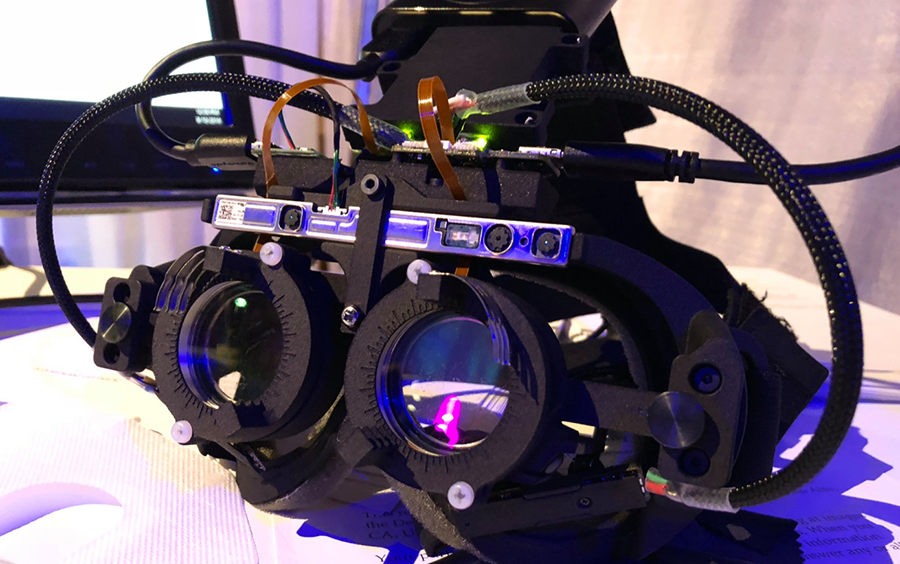Presbyopia is the natural loss of near focusing ability of the eye that occurs with age. Aging of the eye results in progressively worsening ability to focus clearly on close objects. Treatment is typically with eye glasses. The eyeglasses used have higher focusing power in the lower portion of the lens. Off the shelf reading glasses may also be sufficient for some.
Read more Eye-tracking is Going to Be a Game Changer for Virtual Reality
Bifocals and progressive lenses bend light in such a way as to bring such objects into focus. However, this cheap technique is inflexible; they only provide a small “viewport” through which to view the world. There are also adjustable-lens glasses, but they must be adjusted slowly and manually with a dial on the side. What if the whole lens could be made to change shape automatically, depending on the user’s need, in real time?
Nitish Padmanaban and his colleagues Robert Konrad and Gordon Wetzstein at SIGGRAPH in Vancouver, are working on such a system. Although the prototype is far too bulky and limited for actual deployment, the concept seems totally sound, reports TechCrunch.
TechCrunch’s Devin Coldewey talked with lead researcher Padmanaban, who mentioned something called the convergence-accommodation problem. The way that we see changes in real life when we move and refocus our eyes from far to near doesn’t happen properly (if at all) in VR, and that can produce pain and nausea, he explained.
Having lenses that automatically adjust based on where you’re looking would be useful.

Here’s how it works
The glasses have depth sensor placed on them to collect a basic view of the scene in front of the person, such as a newspaper is 14 inches away, a table three feet away, the rest of the room considerably more. An eye-tracking system then checks where the user is currently looking and cross-references that with the depth map.
If the user has trouble focusing on objects closer than 20 inches away, the apparatus makes an intelligent decision as to whether and how to adjust the lenses of the glasses.
Read more Tobii and Lumus Collaborate to Integrate Eye Tracking Technology into AR Glasses
“Even with an early prototype, the Autofocals are comparable to and sometimes better than traditional correction,” reads a short summary of the research published for SIGGRAPH. “Furthermore, the ‘natural’ operation of the Autofocals makes them usable on first wear.”
The researchers are now tests to measure improvements derived from the system. Although, long way from commercialization, Padmanaban said despite its early stage, the technology is highly promising and some manufacturers are already looking into this type of method.












